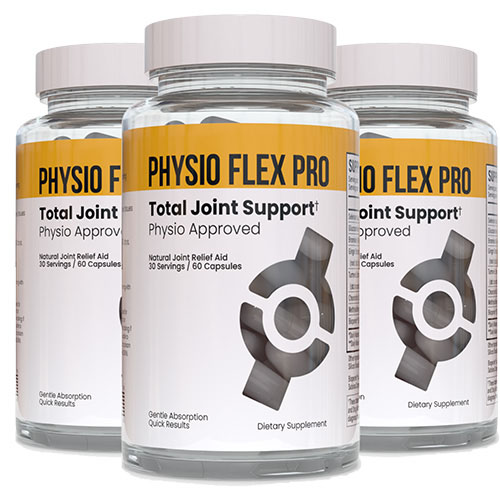Does Relief Factor Really Work For Joint Pain

The scent of eucalyptus and lavender hung heavy in the air of the yoga studio. Sunlight streamed through the large windows, illuminating dust motes dancing in the stillness. But the serene atmosphere couldn't quite mask the subtle grimace on Sarah's face as she transitioned from Downward Dog to Warrior One. A familiar ache pulsed in her knees, a persistent reminder of years spent running marathons and the wear-and-tear they had exacted on her joints. Like millions of others, she was on a constant quest for relief.
This brings us to the question: Does Relief Factor, a widely marketed dietary supplement, truly deliver on its promises of alleviating joint pain? While anecdotal evidence abounds, the science behind its effectiveness is more nuanced, requiring a careful examination of its ingredients, available research, and the experiences of those who have tried it.
Understanding Relief Factor
Relief Factor is a dietary supplement marketed as a natural solution for pain relief, particularly joint pain. Its formula comprises four key ingredients: Epimedium, Turmeric, Resveratrol, and Omega-3 fatty acids.
The blend is designed to address inflammation, which is often a primary driver of joint discomfort. Proponents suggest that the synergistic effect of these ingredients provides a comprehensive approach to pain management.
A Closer Look at the Ingredients
Epimedium, also known as horny goat weed, has a long history in traditional Chinese medicine. It's believed to have anti-inflammatory and antioxidant properties. However, scientific evidence specifically linking Epimedium to joint pain relief is limited.
Turmeric, and more specifically its active compound curcumin, is perhaps the most well-known ingredient. Numerous studies have demonstrated curcumin's potent anti-inflammatory effects. It is important to note that the bioavailability of curcumin is low, so Relief Factor likely contains a formulation to enhance absorption.
Resveratrol, found in grapes and red wine, is another antioxidant with potential anti-inflammatory benefits. Research suggests it may protect cartilage, which is essential for joint health. The extent of its effectiveness in Relief Factor's formulation remains a point of inquiry.
Omega-3 fatty acids, particularly EPA and DHA, are well-established for their anti-inflammatory properties. They are commonly found in fish oil and are crucial for overall health. Numerous studies support the use of Omega-3 for managing inflammation and potentially reducing joint pain.
The Science Behind the Claims
The Relief Factor website showcases testimonials and some studies that they claim support the product's efficacy. However, it's important to critically evaluate this evidence. Most of the research focuses on the individual ingredients rather than the specific Relief Factor formulation.
A comprehensive review of scientific literature reveals a mixed bag. While studies support the anti-inflammatory properties of curcumin and Omega-3 fatty acids, the evidence for Epimedium and Resveratrol specifically targeting joint pain is less robust. Clinical trials testing the Relief Factor formula itself are scarce.
Organizations such as the Arthritis Foundation acknowledge the potential benefits of some of these ingredients, particularly curcumin and Omega-3s. However, they emphasize the importance of consulting with a healthcare professional before starting any new supplement regimen.
Real-World Experiences: Anecdotal Evidence
The internet is rife with both glowing reviews and scathing criticisms of Relief Factor. Many users report significant reductions in joint pain and improved mobility. Others, however, experience no noticeable benefits or even report side effects such as digestive upset.
One must be cautious when interpreting anecdotal evidence. Placebo effects, individual variations in response to supplements, and differences in underlying conditions can all influence perceived outcomes. What works for one person may not work for another.
It's crucial to remember that dietary supplements are not regulated as strictly as pharmaceutical drugs. This means that the quality, purity, and potency of Relief Factor may vary between batches. Independent testing and certification by third-party organizations can provide some reassurance.
Considerations and Caveats
Before considering Relief Factor, it's essential to discuss your joint pain with a doctor. They can help determine the underlying cause of your pain and recommend appropriate treatment options. These may include physical therapy, medication, or lifestyle modifications.
Dietary supplements can interact with medications. It is crucial to inform your doctor about all supplements you are taking. This helps prevent potentially harmful interactions.
Relief Factor is not a substitute for conventional medical treatment. It should be used as a complementary therapy, if at all, under the guidance of a healthcare professional. Setting realistic expectations is vital; supplements are not magic bullets.
As with any health-related product, a healthy dose of skepticism is advised. Claims of miracle cures should be treated with caution, and it's important to rely on evidence-based information rather than solely on marketing hype.
Making an Informed Decision
Ultimately, the decision of whether or not to try Relief Factor is a personal one. Consider the following factors when making your decision:
- Consult your doctor to rule out other potential causes of your joint pain.
- Research the individual ingredients and their potential benefits and risks.
- Read reviews from multiple sources, but remember that anecdotal evidence is not a substitute for scientific proof.
- Be aware of the potential for placebo effects and individual variations in response.
- Start with a small dose and monitor your symptoms carefully.
- Discontinue use if you experience any adverse effects.
If, after careful consideration, you decide to try Relief Factor, approach it as part of a broader strategy for managing your joint pain. This may include exercise, weight management, and a healthy diet.
In the end, there is no one-size-fits-all solution for joint pain. What works for one person may not work for another. However, by educating yourself about the available options and working closely with your healthcare provider, you can increase your chances of finding effective relief and improving your quality of life.
Back in the yoga studio, Sarah finished her practice. The ache in her knees was still present, but she felt a sense of accomplishment. She knew that managing her joint pain was an ongoing process, a combination of exercise, stretching, and perhaps, with careful consideration, the right supplements. The quest for relief continues, but with knowledge and informed choices, the journey becomes less daunting.


















